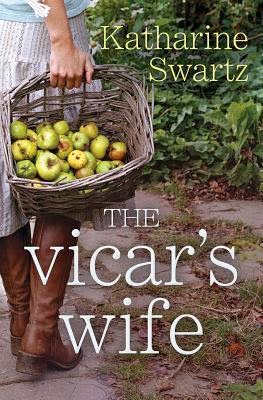Jane Hatton loves her life
in New York. She is happily
married to Andrew and has three children.
Her life is filled with her job at a non-profit that assists women in
need and the demands of a frenzied family life. When Andrew decides that he wants to move back home to
England, Jane is shocked but agrees.
When the family moves to the former vicarage in Cumbria, she is
unprepared for the adjustment that is required. Thus begins Katherine Swartz’s The Vicar’s Wife.
Cumbria
is gloomy, rural, and insular—everything New York is not. With no friends, a house with few
amenities, and no job to occupy her time, Jane falls into a funk. She resents the move and her attitude
causes a rift between her and her husband. Though her younger children are adjusting to to the move,
Natalie, her fourteen year old, is sullen and withdrawn. When Jane finds a grocery list written
by a former occupant of the vicarage, she sets out to find more about the woman
who occupied her home.
Told
in alternating points of view, the reader experiences Jane’s story as well as
the point of view of the writer of the grocery list, Alice James. Alice was the wife of the vicar in the
1930s. Happily married, Alice
makes the vicarage her home, even as she struggles as a new bride and vicar’s
wife. Through the changes in her
life, she learns to soldier on and adapt—as well as to endure losses.
There
were many things to love about The Vicar’s Wife. The English setting was well drawn and it came to life with
Katherine Swartz’s descriptions.
The isolation, the coldness, and the loneliness of Cumbria helped
reinforce Jane’s misery and I felt as though I could feel the wind rush over
the coast. Also enjoyable was the
story of Alice and the establishment of her life as a newlywed at the vicarage. I particularly enjoyed the
characterization of Alice’s husband, David James, as well as the women who
populated Alice’s later life: her
adopted daughter, her housekeeper, and the town’s scandalous single mother.
My
biggest complaint is about Jane.
She complained. And I
mean—she complained. She completely
hated England and took forever to make steps to leave New York behind. She refused to make progress on making
the house livable, made her family quite miserable, and even made a trip back
to New York to help out at her old job.
However, when she finally made attempts to make England her home (making
friends with other moms, going to community events, and talking to locals), it
seemed that no one in her family even acknowledged her efforts. Her husband, mother-in-law, and
children berated her frequently for her lack of effort—even as she was making
an effort. It made me
furious. Unfortunately, this led
to more sad-sack behavior from Jane and I found myself struggling to like her
or her family at all. The modern
scenes were quite tedious for his reason, and the flashback scenes were far
more enjoyable.
Overall,
I enjoyed The Vicar’s Wife. I really enjoyed the theme of the
importance of one ordinary life.
Though the vicar’s wife would never be famous, her life did count for
something and had value. Quite a
nice message to pass along.
*I received a copy of this book for Kregel blog tours in exchange for an honest review. Regina


No comments:
Post a Comment
The old grey donkey, Eeyore stood by himself in a thistly corner of the Forest, his front feet well apart, his head on one side, and thought about things. Sometimes he thought sadly to himself, "Why?" and sometimes he thought, "Wherefore?" and sometimes he thought, "Inasmuch as which?" and sometimes he didn't quite know what he was thinking about.
Thank you for taking time out of your day to leave a comment. It's appreciated.